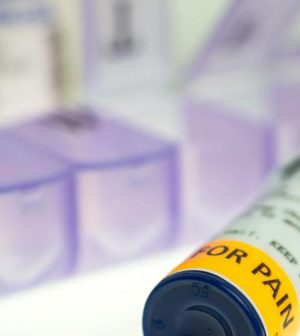- Navigating Your Midlife Crisis: Embracing New Possibilities
- City Raccoons Showing Signs of Domestication
- Mapping the Exposome: Science Broadens Focus to Environmental Disease Triggers
- One Week Less on Social Media Linked to Better Mental Health
- Your Brain Changes in Stages as You Age, Study Finds
- Some Suicide Victims Show No Typical Warning Signs, Study Finds
- ByHeart Formula Faces Lawsuits After Babies Sickened With Botulism
- Switch to Vegan Diet Could Cut Your Greenhouse Gas Emissions in Half
- Regular Bedtime Does Wonders for Blood Pressure
- Dining Alone Could Mean Worse Nutrition for Seniors
It’s Tougher for Non-White Americans to Get Opioid Addiction Drug

Americans addicted to opioids who need the anti-addiction med buprenorphine are far more likely to find it if they live in a predominantly white neighborhood, new research finds.
“Access is substantially better in areas that are very white,” said study lead author Coleman Drake, an assistant professor of health policy and management at Pitt Public Health in Pittsburgh.
“When you move to areas with even some racial or ethnic diversity, there is a large decline in the geographic availability of buprenorphine prescribers and prescription fills,” he noted in a University of Pittsburgh news release. “In areas that are less than 95% white, for example, there’s a 45 to 50% drop [in access].”
The findings were published Feb. 20 in the Journal of Addiction Medicine.
Prior studies have looked at access to buprenorphine, but Drake’s group is among the first to look at the issue at the local level.
They tracked the number of health care providers in a given ZIP code who might prescribe or dispense buprenorphine to those who needed it.
Compared to largely white urban areas, the most ethnically/racially diverse urban zip codes were between 45% to 55% less likely to have prescribers able to provide buprenorphine, Drake’s group found. That gap rose to between 62% to 79% for rural parts of the United States, the study found.
Spurred by the ongoing crisis of opioid abuse and overdose deaths, efforts have been made over the past decade to ease access to buprenorphine, the team said. But any rise in access hasn’t been equal for everyone.
According to Drake, more must be done to raise the number of buprenorphine prescribers in diverse communities and to promote better prescribing among those already prescribing the treatment.
More information
Find out more about buprenorphine at the Substance Abuse and Mental Health Services Administration.
SOURCE: University of Pittsburgh, news release, Feb. 20, 2024
Source: HealthDay
Copyright © 2025 HealthDay. All rights reserved.










